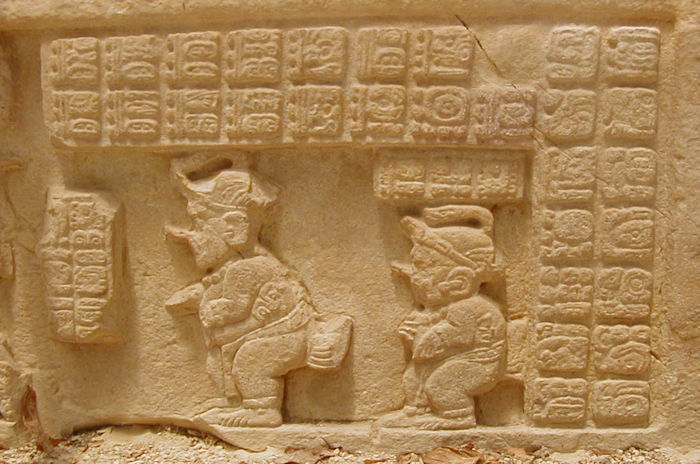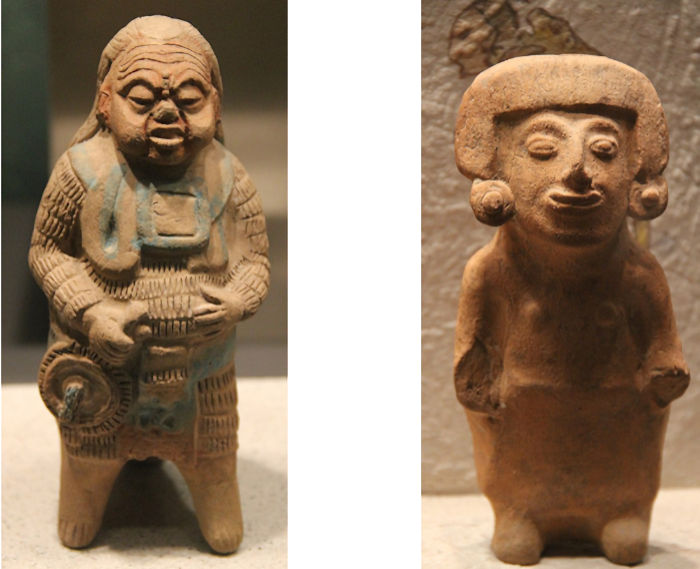Alux: Little Mythical Troublemaker And Guardian Of Corn Fields In Mayan Folklore
A. Sutherland - AncientPages.com - In the mythology of Maya peoples from the Yucatán Peninsula and Guatemala, there are tales of curious creatures called aluxes. They are believed to be guardians of nature. They are often compared to elves, mythical creatures with magical powers.
Aluxes in Yaxchilán, Chiapas - The creatures are particularly popular in the Yucatan peninsula and in certain places in Belize and Guatemala. Credit: Jami Dwyer - Public Domain
The aluxes’ (in plural: ‘aluxo'ob,’) appearance is somewhat enigmatic and depends on different ancient cultural traditions. They can be sometimes associated with a leprechaun in Celtic folklore. Otherwise, Aluxes are small, approximately knee-high beings resembling miniatures of traditionally dressed Maya people.
However, according to other descriptions, depending on the tribe's original folklore, they can be between three and six feet tall and hairless. The creatures move into the area where a new farm is established. If they are treated with respect, they can be very helpful and are considered benevolent creatures, faithful to their owners but mischievous with strangers.
It is not recommended to talk and even name the alux loudly because the creature can be annoyed and leave its small house, causing a lot of trouble.
When the properties of their owners are passed on to others, the aluxes would appear and frighten the children. To appease them, the new owners are advised to give them food, honey, corn, and even cigarettes.
They are usually invisible but have the capability to assume human form to communicate with people, behave normally or frighten them if they want to. In this case, they can be compared to the pukwudgies, grey-faced humanoid creatures in Native American beliefs, which are said to be tricksters, and troublemakers, wreaking havoc, damaging crop fields, and spreading diseases.
The alux is generally associated with forests, caves, stones, cenotes, and fields but can also be tempted to move to another place in exchange for offerings.
Mayan farmers were always aware of their presence and were said to build a small two-story house in the middle of their cornfields, where the alux would live.
In this way, the creature would protect the field at night, summon rain and help grow the corn during the first seven years. When those seven years ended, the farmer must seal all openings in this little house to keep the alux inside.
If this was not done properly, the alux could run wild and start playing tricks on people.
Left and Rigt: Credit: Gary Todd - Maya Gallery, INAH, National Museum of Anthropology, Mexico City - CC0
Although the Maya folklore associated with the aluxes is very old, the tradition of building the so-called kahtal alux, ("houses of the alux") is still alive among contemporary Mayans, although no one is able to explain why.
The Maya themselves explain the aluxes as the spirits of their ancestors, or the spirits of the land itself, prior to contact with Western civilization.
Other cultures have also strange stories of little creatures: the Shoshone tribe of Native Americans that originally lived in what is now Idaho, Wyoming, Nevada, and Utah.
They have stories of tiny people known as the nimerigar. Many say these creatures are nothing more than just myths.
We cannot say, however, that all stories about the little people are fantasies. The physical remains of tiny people have been reported in various locations (mostly in caves) in the western United States, especially in Montana and Wyoming. One such discovery made in 1932, and later known as the Pedro mummy, was reported by two prospectors, Frank Carr and Cecil Main, who found it accidentally in a cave in the Pedro Mountains of Wyoming. As Carr and Main said, the mummy (only six inches tall in its seated position but with all proportions of an adult) had been sitting upright on a ledge in the cave, as if it had been waiting for them.
In most cases, these small beings were discovered in caves. Examination of the small bodies has been conducted, but the results of the studies have not always been revealed to the public.
Updated on May 2, 2022
Written by – A. Sutherland - AncientPages.com Senior Staff Writer
Copyright © AncientPages.com All rights reserved. This material may not be published, broadcast, rewritten or redistributed in whole or part without the express written permission of AncientPages.com
Expand for referencesReferences:
Clayton, Maya Mythology
Rose C. Spirits, Fairies, Leprechauns, and Goblins
More From Ancient Pages
-
 Great Sumerian God Enki: Creator, Protector Of Humanity, Brilliant Scientist And Patron Of Craftsmen And Artisans
Featured Stories | May 9, 2017
Great Sumerian God Enki: Creator, Protector Of Humanity, Brilliant Scientist And Patron Of Craftsmen And Artisans
Featured Stories | May 9, 2017 -
 Roman Forum (‘Forum Romanum’) – The Heart Of Ancient Rome
Featured Stories | Aug 5, 2019
Roman Forum (‘Forum Romanum’) – The Heart Of Ancient Rome
Featured Stories | Aug 5, 2019 -
 What 12 Ancient Skeletons Discovered In A Mysterious Tomb In Petra Could Tell Us About The Ancient City
Featured Stories | Oct 25, 2024
What 12 Ancient Skeletons Discovered In A Mysterious Tomb In Petra Could Tell Us About The Ancient City
Featured Stories | Oct 25, 2024 -
 Sami People: Facts And History About The Only Indigenous People Of Most Northern Europe
Featured Stories | Sep 25, 2016
Sami People: Facts And History About The Only Indigenous People Of Most Northern Europe
Featured Stories | Sep 25, 2016 -
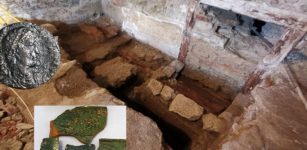 4th-Century Roman Coin And Pub-Like Structure With Heating System Excavated In Slovakia
Archaeology | Aug 11, 2020
4th-Century Roman Coin And Pub-Like Structure With Heating System Excavated In Slovakia
Archaeology | Aug 11, 2020 -
 January 2016: Lost Library Of John Dee Revealed In A Special Exhibition
Archaeology | Jan 24, 2016
January 2016: Lost Library Of John Dee Revealed In A Special Exhibition
Archaeology | Jan 24, 2016 -
 What Really Happened To Library Of Alexandria Remains A Mystery
Featured Stories | Dec 3, 2020
What Really Happened To Library Of Alexandria Remains A Mystery
Featured Stories | Dec 3, 2020 -
 Thousand Unearted Artifacts Reveal ‘Major’ Ancient Migration To Timor Island
Archaeology | May 23, 2024
Thousand Unearted Artifacts Reveal ‘Major’ Ancient Migration To Timor Island
Archaeology | May 23, 2024 -
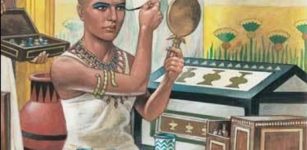 Ancient Egyptian Cosmetics – Why Was It So Important To Both Men And Women?
Ancient History Facts | May 19, 2020
Ancient Egyptian Cosmetics – Why Was It So Important To Both Men And Women?
Ancient History Facts | May 19, 2020 -
 Invisible Ink On Antique Nile Papyrus From The Island Of Elephantine – Revealed
Archaeology | Aug 21, 2019
Invisible Ink On Antique Nile Papyrus From The Island Of Elephantine – Revealed
Archaeology | Aug 21, 2019 -
 Mysterious Ancient Remains Of The Lady In The Well – An Archaeological Detective Story
Archaeology | Sep 11, 2020
Mysterious Ancient Remains Of The Lady In The Well – An Archaeological Detective Story
Archaeology | Sep 11, 2020 -
 Valley Temple At Giza: Great Masterwork Testifies To Remarkable Engineering Skills Of Megalith Builders
Ancient Technology | Jun 9, 2017
Valley Temple At Giza: Great Masterwork Testifies To Remarkable Engineering Skills Of Megalith Builders
Ancient Technology | Jun 9, 2017 -
 DNA Study Of Ice Age Survivors Reveals A Surprise About The Gravettian Culture
Archaeology | Mar 1, 2023
DNA Study Of Ice Age Survivors Reveals A Surprise About The Gravettian Culture
Archaeology | Mar 1, 2023 -
 Ponce De Leon’s Quest For The Fountain Of Youth In Florida
Featured Stories | Jun 12, 2019
Ponce De Leon’s Quest For The Fountain Of Youth In Florida
Featured Stories | Jun 12, 2019 -
 Ancient Mystery Of America’s Missing Metal – Can The Answer Be Found In Ancient Europe?
Civilizations | May 18, 2018
Ancient Mystery Of America’s Missing Metal – Can The Answer Be Found In Ancient Europe?
Civilizations | May 18, 2018 -
 10 Divine Weapons Of The Gods
Featured Stories | Jul 28, 2015
10 Divine Weapons Of The Gods
Featured Stories | Jul 28, 2015 -
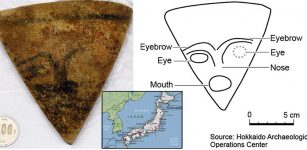 Jomon Period: Triangle-Shaped Stone Artifact Depicting Human Face Found For The First Time In Japan
Archaeology | Dec 25, 2017
Jomon Period: Triangle-Shaped Stone Artifact Depicting Human Face Found For The First Time In Japan
Archaeology | Dec 25, 2017 -
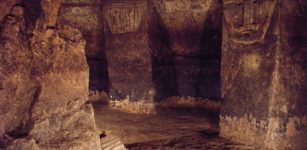 Huge Subterranean Pre-Columbian Shaft Tombs In Tierradentro, Colombia
Featured Stories | Apr 28, 2021
Huge Subterranean Pre-Columbian Shaft Tombs In Tierradentro, Colombia
Featured Stories | Apr 28, 2021 -
 Discovered: Mysterious 2,400-Year-Old Ancient Egyptian Shrine Belonging To 30th Dynasty Pharaoh Nectanebo I
Archaeology | Oct 6, 2015
Discovered: Mysterious 2,400-Year-Old Ancient Egyptian Shrine Belonging To 30th Dynasty Pharaoh Nectanebo I
Archaeology | Oct 6, 2015 -
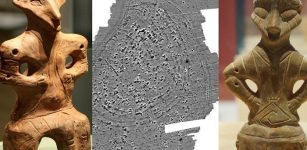 Huge Unknown 7,000-Year-Old Vinca Settlement Found In Serbia?
Archaeology | Apr 30, 2024
Huge Unknown 7,000-Year-Old Vinca Settlement Found In Serbia?
Archaeology | Apr 30, 2024

